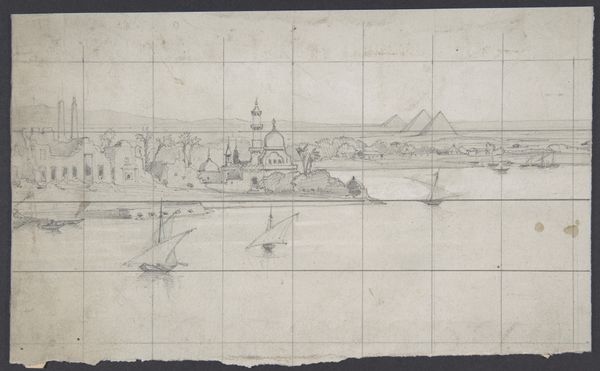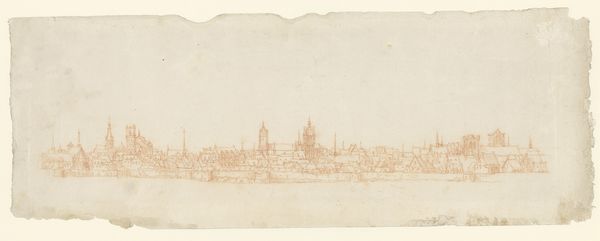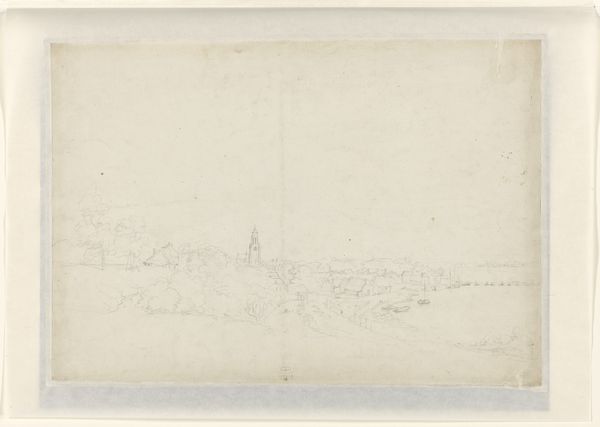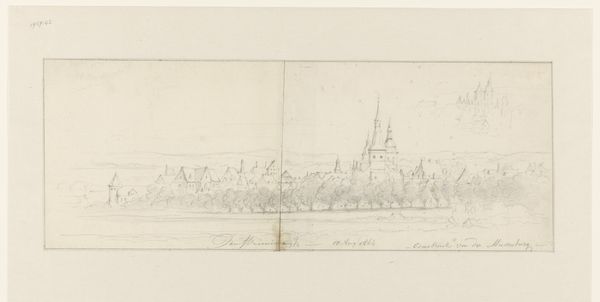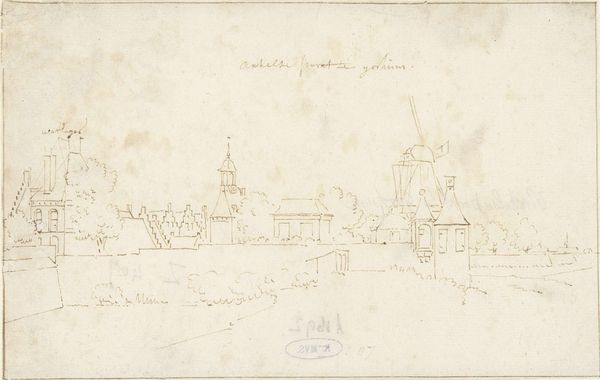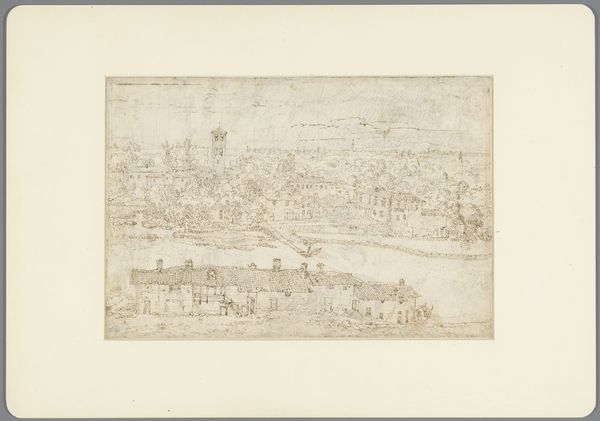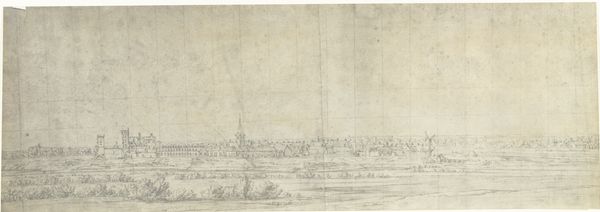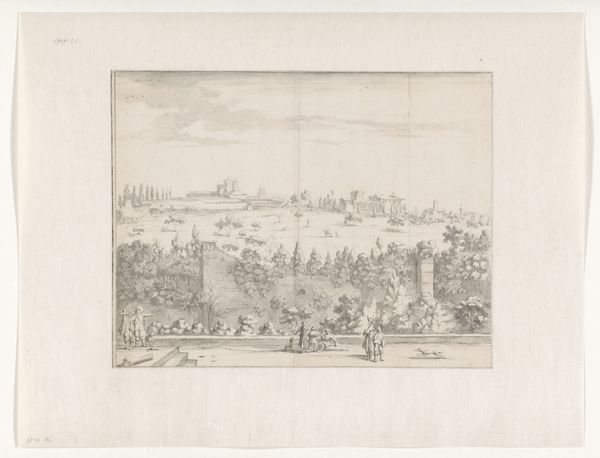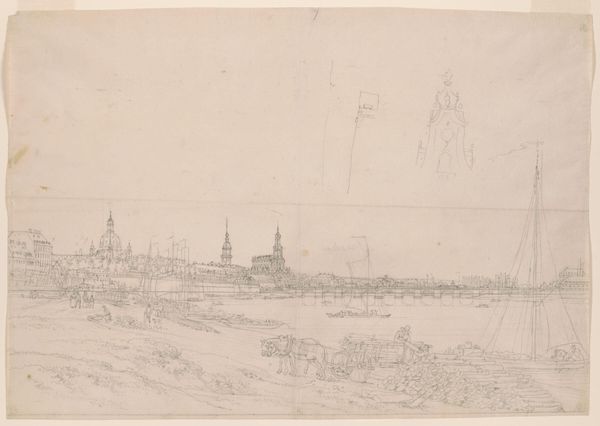
drawing, pencil
#
drawing
#
amateur sketch
#
neoclacissism
#
light pencil work
#
quirky sketch
#
dutch-golden-age
#
pencil sketch
#
incomplete sketchy
#
landscape
#
personal sketchbook
#
sketchwork
#
pencil
#
sketchbook drawing
#
cityscape
#
sketchbook art
#
initial sketch
Dimensions: height 80 mm, width 115 mm
Copyright: Rijks Museum: Open Domain
Curator: Here we have Jan Brandes’s "Gezicht op Schoonhoven," a pencil drawing dating back to 1787. Brandes captured a detailed, albeit delicate, view of Schoonhoven, a town in the Netherlands. Editor: It feels incredibly fragile, like a whispered memory. The pencil lines are so light, it’s as if the scene could just fade away if you look at it too intensely. There's a wistful, almost melancholic quality to it, don't you think? Curator: Yes, the medium contributes significantly to that feeling. This was a period when the picturesque was becoming increasingly popular, and artists were finding new ways to capture fleeting impressions of landscapes. Brandes, however, wasn't just capturing a scene; he was also participating in a visual inventory of Dutch society. The work provides insight to the common architectural features of the area. Editor: Right. You can see a couple of windmills too in the landscape above and below buildings clustered so close together. There's also this really engaging tension between the top and bottom registers. It gives the sketch a strangely doubled perspective – like a reflection, or maybe a half-remembered dream. I can't tell, what purpose did it serve as sketchbook art? Curator: That's a good question. It allows the viewer to see Schoonhoven from various vantages in this sketchwork, which is part of its charm. From that perspective, Brandes could engage with enlightenment ideals as a kind of project that democratized the public space with this sort of vista. Editor: Ah, now it clicks. But the incompleteness still strikes me. Like a painter started drawing with confidence but grew restless halfway through! Curator: Well, it invites us to complete it, doesn't it? To imagine what details Brandes might have added. It becomes a collaborative act between the artist and the viewer. Editor: I see what you mean. I was originally focusing on the aesthetic, the delicate and slightly sad beauty of it all. The historicity puts all those choices into context, even as he draws his surroundings! I'm suddenly aware that it reflects Dutch history and culture at that particular moment, more of the spirit of that place at the time, so to speak. Curator: Precisely! These sketches serve not just as artistic exercises but also as records, providing fascinating snapshots of towns and landscapes that may have changed significantly since the late 18th century. Editor: Beautiful. Brandes' sketch serves to preserve Schoonhoven's legacy and offers new historical perspectives, so we will value them in a way.
Comments
No comments
Be the first to comment and join the conversation on the ultimate creative platform.

